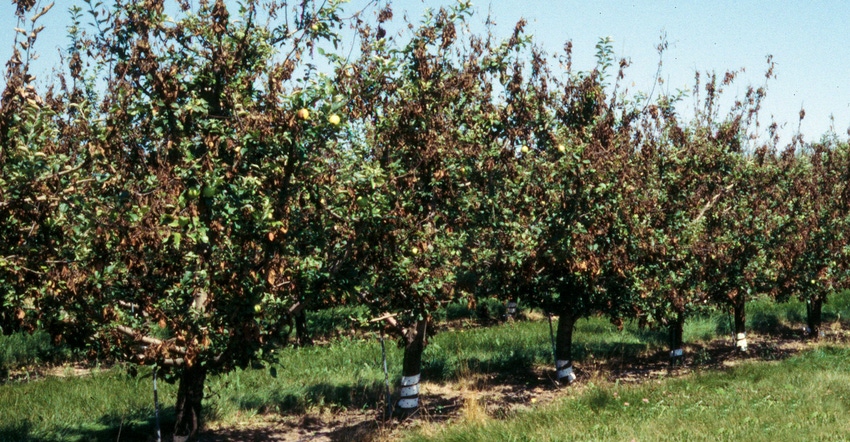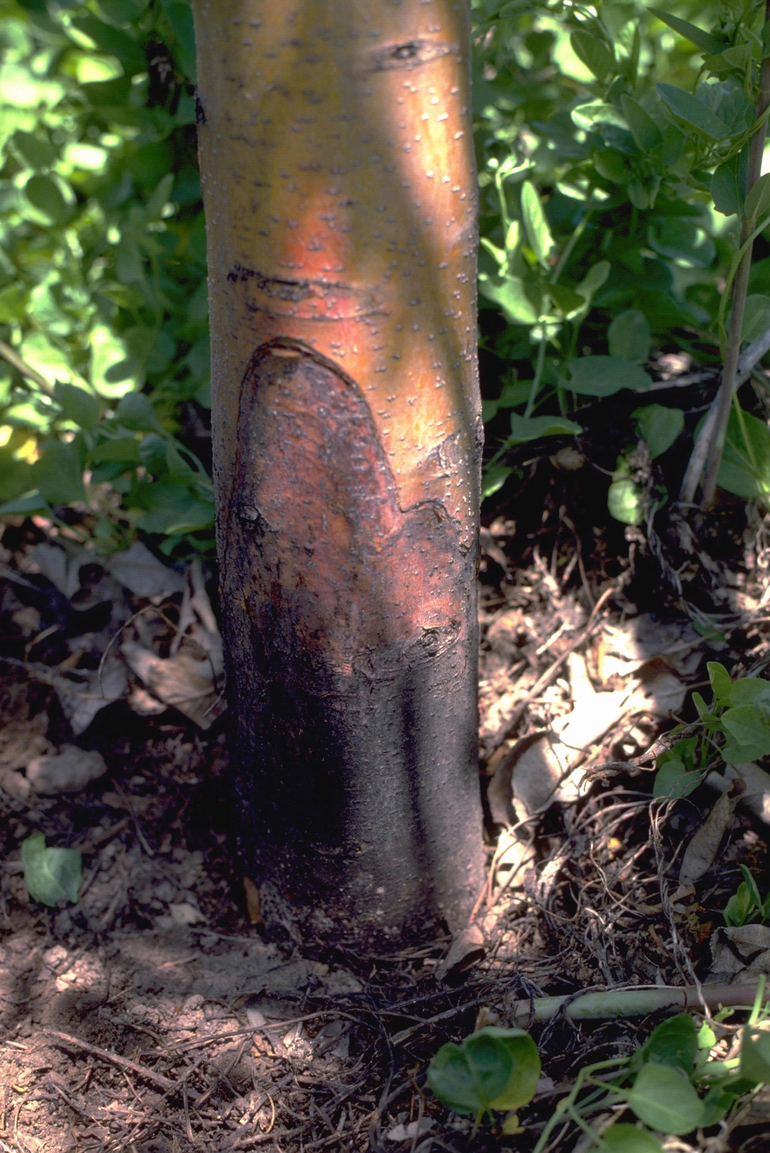
Fruit growers could use some relief from the damp, rainy weather, says Kari Peter, Penn State plant pathologist. Since last July, Mother Nature has yet to shut off her spicket for an extended period.
“I have a feeling that this stress in the last year is a tipping point,” she says.
The wet soils have created the right conditions for many diseases to pop up. She says growers are on alert for apple scab and fruit rots, though fire blight, one of the most destructive of all diseases of apples and pears, is not as much of a concern, at least right now.
Fire blight, caused by the Erwinia amylovora pathogen, needs four ingredients to pop up: open blossoms, temperatures of 60 degrees F or higher, some sort of wetting event and an accumulation of at least 198 hours of 60-degree weather.
Peter says you can check off three ingredients from the list, but she’s not concerned that there have been enough hours of 60-degree weather. That could change quickly though, she admits.
Last year, the apple bloom coincided with a sudden warmup in early spring and some rain, causing fire blight in some places. This year has seen an extended bloom, but temperatures have been on a roller-coaster ride, with warm days followed quickly by cooldowns under 60 degrees. The latest Crop Progress Report from NASS shows 83% of apples blooming in Pennsylvania, well-ahead of the five-year average of 40% during this time of year.
Soilborne diseases and pathogens are not as much a concern for tree fruit growers as say vegetable growers, but Peter says the wet soils are ripe for phytophthora root rot and Fusarium root rot, the latter of which will thrive in low-oxygen soils.
Fusarium root rot will rot the roots of tree fruit and will eventually cause a yellowing or reddening of the leaves. Once that happens, Peter says there is little a grower can do. She is recommending growers apply phosphonate fungicides to the soil, either drenched or foliar applied though she says drenching is better.
 ROTTEN START: Kari Peter says the wet soils have put growers on alert for phytophthora root rot, which can cause widespread damage in orchards.
ROTTEN START: Kari Peter says the wet soils have put growers on alert for phytophthora root rot, which can cause widespread damage in orchards.

The peach bloom, 87%, is also ahead of the five-year average of 64%, according to the NASS report, and slightly ahead of last year, 78%.
Jeff Graybill, Extension educator in Lancaster County, says corn is quickly emerging.
“I’ve seen corn that is up with two leaves already, and even some soybeans pushing through. I think that we are probably ahead of last year and about on par with other years here in Lancaster,” he writes in an email. “We did have 2.5 inches of rain and this will slow things down a lot. Also, I worry about seeds rotting in areas of the field which would have standing water for more than a few hours.”
On track in Maryland, Delaware
Corn is 42% planted in Maryland, according to the Crop Progress Report, slightly ahead of the five-year average of 32%. Apples are 76% blooming, also ahead of the five-year average, and peaches are 75% blooming, which is about average.
Corn is 36% planted in Delaware, which is right around average but slightly behind last year’s pace of 43%. Apples are 54% blooming, right around average, and peaches are 72% blooming, also right on average.
In New Jersey, 30% of apples and 35% of peaches are blooming. Blueberries are 11% green tip.
Only 6% of the state’s corn has been planted.
Still cold in New York
Very little planting has been done in New York as spring continues to be cool and wet.
The report states that 15% of dry onions and 13% of sweet corn have been planted.
Most crop progress reporters say it’s too cold and wet right now for much work to get done.
“Continuous rain has saturated soils and put all forms of spring field work on pause. Very little tillage has been completed in the county at this time, and almost no crops have been planted besides a few spring seeding and spring grains for those that were lucky enough to get them in before the constant rain began,” writes Colleen Cargile, a crop reporter in Cayuga County. “Now that we have entered May, it is definitely a concern among producers about having enough time to get all crops planted. If this pattern of weather continues for much longer, I anticipate that there will be many prevented planted acres claimed.”
“Cool, wet weather has continued, which has prevented any progress in field work,” writes Ellen deMey, a crop reporter in Oswego County. “The ground is still quite cool and the soil is once again saturated.”
“Other than manure being spread, little field work was done,” writes David Holck, crop reporter in eastern New York. “Farmers are getting frustrated with the wet conditions. When the weather finally breaks, there will be a lot of field work that will need to be done.”
About the Author(s)
You May Also Like






